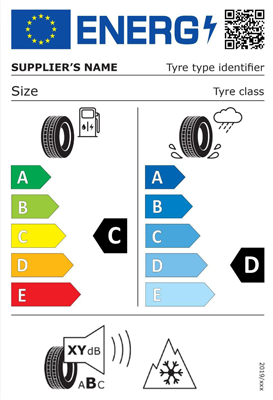Tyre laws and regulations
It is not possible to drive any desired tyre on your car and thus the tyres you choose should have an approval for your vehicle. When it comes to tyres, there are a few other regulations besides the necessary tyre approval.
Here you can find the tyre laws and regulations:
- Tyre approval
- EU tyre label
- Obligation to carry a spare wheel
- Obligation to fit winter tyres
Approved Tyres
To find out which tyres are allowed on a car or motorbike, it is usually helpful to take a look at the vehicle documents. It is often the case, that other sizes are also allowed, but modifications have to be registered, otherwise, the registration and the insurance cover will expire. Many tyre manufacturers offer on their websites the possibility to apply for such approved tyres by entering the following information:
- vehicle make and model
- vehicle type
- maximum speed
- standard tyres
- permitted axle loads
- desired tyre size(s)
- rim size
EU Tyre Label
The EU Tyre Label or the European Tyre Labelling Regulation has been mandatory for tyre manufacturers since 1 November 2012. The EU Tyre Label was designed to assess certain criteria for a tyre. Three different areas will be tested. First, there is the rolling resistance, the wet grip and the rolling noise that the tyre causes on the road.
This regulation has been reviewed and will be replaced from 1 May 2021 by Regulation (EU) 2020/740, which will be subject to new requirements. With this regulation, the EU wants to protect the environment above all. Thus, customers need to look for the EU Tyre Label when buying products that score well in this respect.
Rolling Resistance
The rolling resistance of a tyre has a direct influence on the fuel consumption of the vehicle. The EU Tyre Label uses classification to test the rolling resistance, where A stands for the lowest and E for the highest rolling resistance. If you pay attention to this point when buying tyres, the EU Tyre Label assigns it to classes. The scale has only 5 classes (A to E), with A being the most efficient.
Wet Grip
The wet grip is also rated in 5 classes from A to E on the EU Tyre Label. The wet grip classification refers to the braking distance compared to a reference tyre. Class A tyres have a much shorter braking distance than class E tyres, which can save lives in an emergency.
Noise
The third point refers to the rolling noise of a tyre (from A, B, C), i.e. the loudness the tyre reaches when driving. The EU Tyre Label shows the level of the rolling noise in decibels. Besides the information provided by the EU Tyre Label, other factors should be taken into account when buying a tyre, such as tyre life and quality. According to the new regulation, which will be updated from 2021, there are also options to include (next to the noise symbol) a symbol for grip in icy conditions and/or heavy snow conditions to the standard labelling.
Tyres designed for heavy snow conditions feature the "3 Peaks and Snow" or "Alpine" symbol on their sidewall. Nordic winter tyres for use on icy surfaces carry a new symbol representing an ice stalagmite.
For each tyre type designation, there is a QR code with a link to the EU product database (EPREL).
In the end, every customer has to decide on the significance of the EU Tyre Label.
Obligation to carry a spare wheel
Many motorists wonder whether a spare wheel is a must. The answer lies in the fact that many car manufacturers no longer equip their new vehicles with a spare wheel but only with repair kits. Yet they would definitely do so if it was necessary. And indeed, there is no law for a spare wheel or tyre repair kit. Still, it should be in your interest to have a solution for a flat tyre. And note that, unlike using a spare wheel, you have to drive to the nearest garage immediately after using a repair kit.
